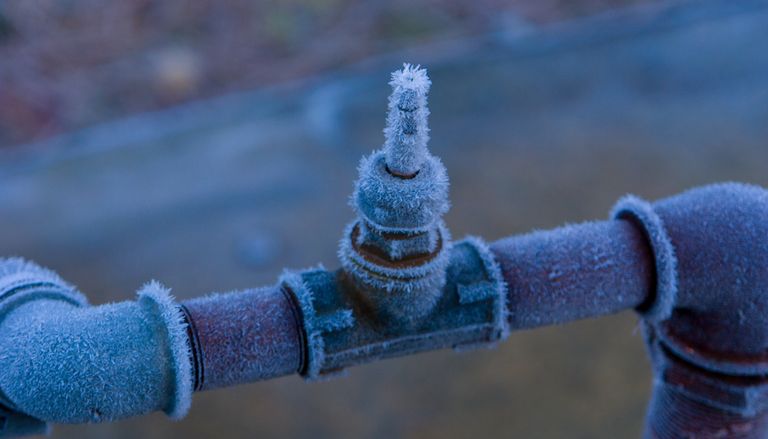Prevent Frozen Plumbing in Cold Weather: Pro Strategies
Prevent Frozen Plumbing in Cold Weather: Pro Strategies
Blog Article
How do you actually feel with regards to How To Avoid Freezing Pipes?

Winter can wreak havoc on your pipes, particularly by freezing pipelines. Right here's just how to stop it from occurring and what to do if it does.
Intro
As temperatures decline, the risk of frozen pipelines increases, potentially bring about costly fixings and water damage. Comprehending just how to prevent frozen pipes is important for home owners in cold climates.
Recognizing Frozen Pipes
What creates pipelines to ice up?
Pipelines ice up when revealed to temperature levels listed below 32 ° F (0 ° C) for prolonged durations. As water inside the pipelines ices up, it increases, taxing the pipeline wall surfaces and possibly causing them to burst.
Risks and damages
Frozen pipelines can lead to water supply disruptions, building damages, and costly repair work. Burst pipelines can flooding homes and cause extensive architectural damage.
Signs of Frozen Piping
Identifying icy pipes early can stop them from rupturing.
How to recognize frozen pipelines
Search for lowered water circulation from faucets, uncommon odors or sounds from pipelines, and visible frost on revealed pipes.
Prevention Tips
Insulating susceptible pipes
Cover pipelines in insulation sleeves or make use of warmth tape to shield them from freezing temperature levels. Concentrate on pipelines in unheated or external locations of the home.
Home heating methods
Keep indoor rooms appropriately warmed, specifically areas with plumbing. Open up closet doors to enable warm air to flow around pipelines under sinks.
Shielding Exterior Pipes
Yard pipes and outside taps
Separate and drain garden tubes prior to winter months. Set up frost-proof spigots or cover outdoor faucets with shielded caps.
What to Do If Your Pipelines Freeze
Immediate actions to take
If you think icy pipelines, maintain taps available to ease pressure as the ice thaws. Utilize a hairdryer or towels soaked in warm water to thaw pipes gradually.
Long-Term Solutions
Structural changes
Think about rerouting pipelines away from outside walls or unheated locations. Add added insulation to attics, cellars, and crawl spaces.
Updating insulation
Purchase top notch insulation for pipes, attics, and wall surfaces. Proper insulation assists keep consistent temperatures and minimizes the threat of frozen pipelines.
Conclusion
Stopping icy pipelines calls for proactive procedures and quick reactions. By comprehending the causes, signs, and safety nets, property owners can safeguard their plumbing throughout winter.
5 Ways to Prevent Frozen Pipes
Drain Outdoor Faucets and Disconnect Hoses
First, close the shut-off valve that controls the flow of water in the pipe to your outdoor faucet. Then, head outside to disconnect and drain your hose and open the outdoor faucet to allow the water to completely drain out of the line. Turn off the faucet when done. Finally, head back to the shut-off valve and drain the remaining water inside the pipe into a bucket or container. Additionally, if you have a home irrigation system, you should consider hiring an expert to clear the system of water each year.
Insulate Pipes
One of the best and most cost-effective methods for preventing frozen water pipes is to wrap your pipes with insulation. This is especially important for areas in your home that aren’t exposed to heat, such as an attic. We suggest using foam sleeves, which can typically be found at your local hardware store.
Keep Heat Running at 65
Your pipes are located inside your walls, and the temperature there is much colder than the rest of the house. To prevent your pipes from freezing, The Insurance Information Institute suggests that you keep your home heated to at least 65 degrees, even when traveling. You may want to invest in smart devices that can keep an eye on the temperature in your home while you’re away.
Leave Water Dripping
Moving water — even a small trickle — can prevent ice from forming inside your pipes. When freezing temps are imminent, start a drip of water from all faucets that serve exposed pipes. Leaving a few faucets running will also help relieve pressure inside the pipes and help prevent a rupture if the water inside freezes.
Open Cupboard Doors
Warm your kitchen and bathroom pipes by opening cupboards and vanities. You should also leave your interior doors ajar to help warm air circulate evenly throughout your home.

I stumbled upon that page about 6 Ways to Prevent Frozen Pipes while doing a search on the search engines. Be sure to take the time to distribute this entry if you liked it. Thank you for being here. Come back soon.
Click Here To Read More Report this page